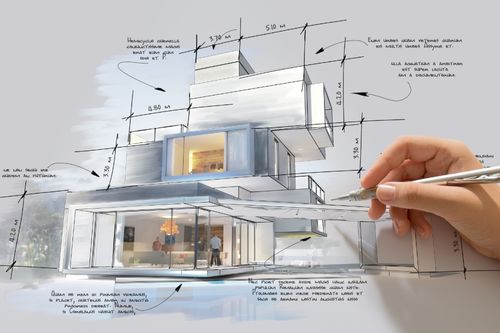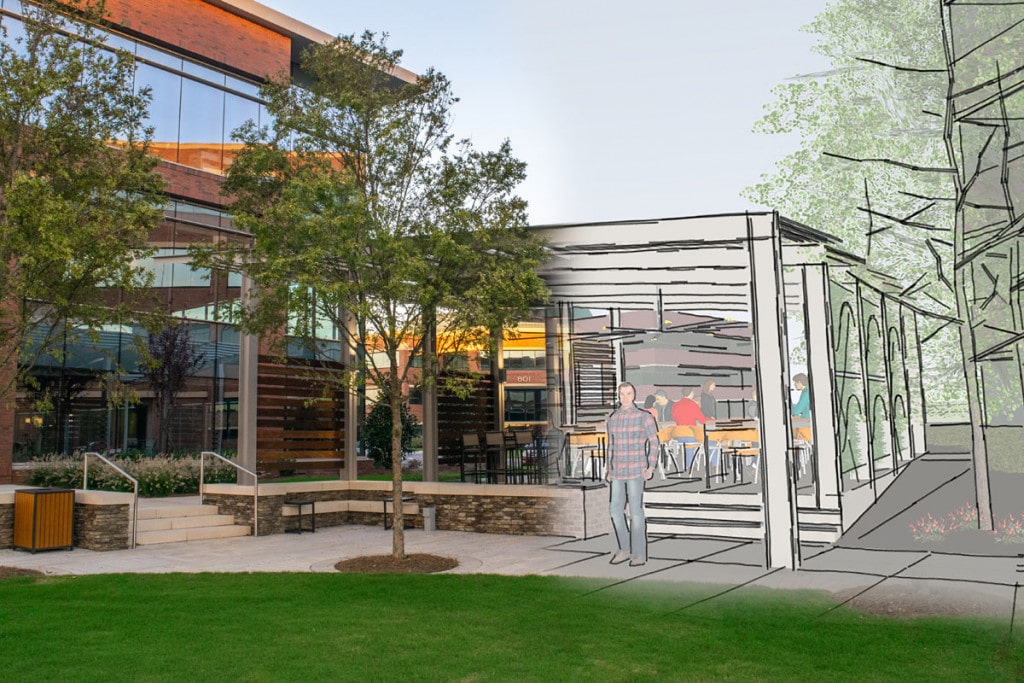Exactly How CDA Architects Provide Cutting-Edge Solutions for Sustainable Design
Exactly How CDA Architects Provide Cutting-Edge Solutions for Sustainable Design
Blog Article
A Thorough Review of Building Designs and Their Impact on Modern City Preparation and Advancement
Building designs have long offered as a mirror to the societal worths and technological advancements of their time, playing a critical function in forming contemporary city preparation and development. From the magnificence of Neoclassicism to the utilitarian technique of Brutalism, each style has presented distinct principles that influence city looks and functionality.

Historical Summary of Building Designs
Throughout background, architectural styles have actually evolved in reaction to social, technical, and ecological factors. Each period reflects the dominating worths, ideas, and advancements of its time, resulting in an abundant tapestry of layout that indicates human creative thinking and adaptation. The ancient worlds, such as the Egyptians and Greeks, established foundational styles that highlighted balance and percentage, offering both useful and visual objectives.
As cultures transitioned via the Center Ages, Gothic style arised, identified by its verticality and intricate describing, matching the spiritual desires of the period. The Renaissance noted a rebirth of timeless perfects, combining art and design in ingenious methods that influenced subsequent styles across Europe.
The Industrial Revolution introduced brand-new products and building methods, triggering movements like Modernism, which tested typical types and accepted simplicity and functionality. The 20th century saw a diversity of styles, with Postmodernism reacting versus the plain minimalism of its predecessor, incorporating historic recommendations and eclectic aspects.
Today, architectural designs remain to advance, driven by globalization and sustainability issues, mirroring a dynamic interaction between heritage and technology (cda architects). This historical review underscores the relevance of architecture as a mirror of social advancement and as a driver for city development
Secret Architectural Styles Explained
The variety of architectural designs reflects the myriad influences that form our built setting, each symbolizing distinct qualities and cultural values. Key building styles consist of Classical, Gothic, Baroque, Modernism, and Postmodernism, each standing for one-of-a-kind historical contexts and visual philosophies.
Classic style, rooted in old Greece and Rome, emphasizes balance, percentage, and making use of columns. On the other hand, Gothic design, prospering in the center Ages, is defined by sharp arcs, ribbed vaults, and flying buttresses, producing an angelic top quality in cathedrals. Baroque style, arising in the 17th century, is marked by splendour, sophisticated embellishment, and a vibrant interaction of light and darkness.
Modernism, which obtained energy in the very early 20th century, focuses on feature over form, utilizing new materials like steel and glass to create minimalist frameworks. Postmodernism, responding against the austerity of Modernism, accepts eclecticism and historical recommendation, usually incorporating playful aspects and irony.
Understanding these styles provides insight right into the social narratives and technical innovations of their respective periods, highlighting just how style offers not just as a shelter, but as a reflection of social worths and ambitions.
Influence On Urban Planning
In shaping the advancement of cities, architectural styles substantially affect urban preparation choices. The option of building style usually determines the appearances, functionality, and overall character of city environments.
Moreover, building styles can impact zoning guidelines and land make use of plans. Urban coordinators should consider the dominating building patterns when making districts, ensuring that new developments balance with existing frameworks. This consideration fosters cohesive urban landscapes and improves area identification.
The implementation of particular building designs can additionally affect socioeconomic more info here elements within a city. As an example, premium modern designs may attract upscale citizens and companies, bring about gentrification, while more affordable real estate solutions may prioritize practical and lasting designs to fit diverse populations. Eventually, the interplay between architectural designs and city preparation produces dynamic cities that reflect both historic context and modern requirements, shaping the lived experiences of their residents.
Sustainability and Modern Architecture

Contemporary building motions, such as biophilic layout and eco-friendly style, advocate for frameworks that harmonize with their surroundings, utilizing all-natural products and promoting biodiversity. These designs frequently integrate renewable resource resources, such as solar panels and wind generators, to minimize dependence on fossil fuels and reduced carbon impacts.
Furthermore, the article source assimilation of advanced innovations, such as smart structure systems, enhances energy administration, maximizing resource usage while making sure owner comfort. Ingenious water monitoring strategies, including rainwater harvesting and greywater recycling, more add to sustainable metropolitan settings.
Significantly, sustainability expands beyond ecological issues; it incorporates social and financial dimensions also. By promoting neighborhood well-being and advertising inclusivity, modern-day building designs straighten with sustainable advancement objectives. Consequently, the development of building techniques proceeds to shape durable cities that not only satisfy the requirements of today however likewise protect the future for generations to come.
Community Involvement in Layout
Neighborhood interaction in style acts as a critical bridge in between designers and the populations they serve, ensuring that the constructed setting shows the needs and desires of its customers. This collective process welcomes area members to contribute their understandings and preferences, fostering a sense of possession and obligation toward the rooms they occupy.
Effective area interaction utilizes different methods, such as workshops, studies, and public discussion forums, to gather varied point of views. These methods facilitate a two-way discussion, enabling engineers to comprehend neighborhood contexts while encouraging citizens to articulate their problems and desires. This inclusivity not just improves the layout high quality yet likewise advertises social equity by attending to the distinct obstacles dealt with by marginalized teams.
Additionally, community interaction can lead to ingenious remedies that could not emerge in a typical design procedure. By incorporating local expertise and social values, designers can develop spaces that resonate even more deeply with users, improving use and sustainability. Ultimately, prioritizing area engagement in style procedures causes environments that nurture social Website communications, assistance health, and strengthen neighborhood connections, thereby playing a critical function in forming modern urban landscapes.
Conclusion
Architectural styles have profoundly influenced modern-day city preparation and advancement, showing progressing cultural and technological contexts. As cities continue to grow and adapt, the ongoing discussion in between architectural heritage and modern design concepts will certainly stay necessary in producing inclusive, vibrant rooms that improve quality of life and advertise social equity.
Report this page